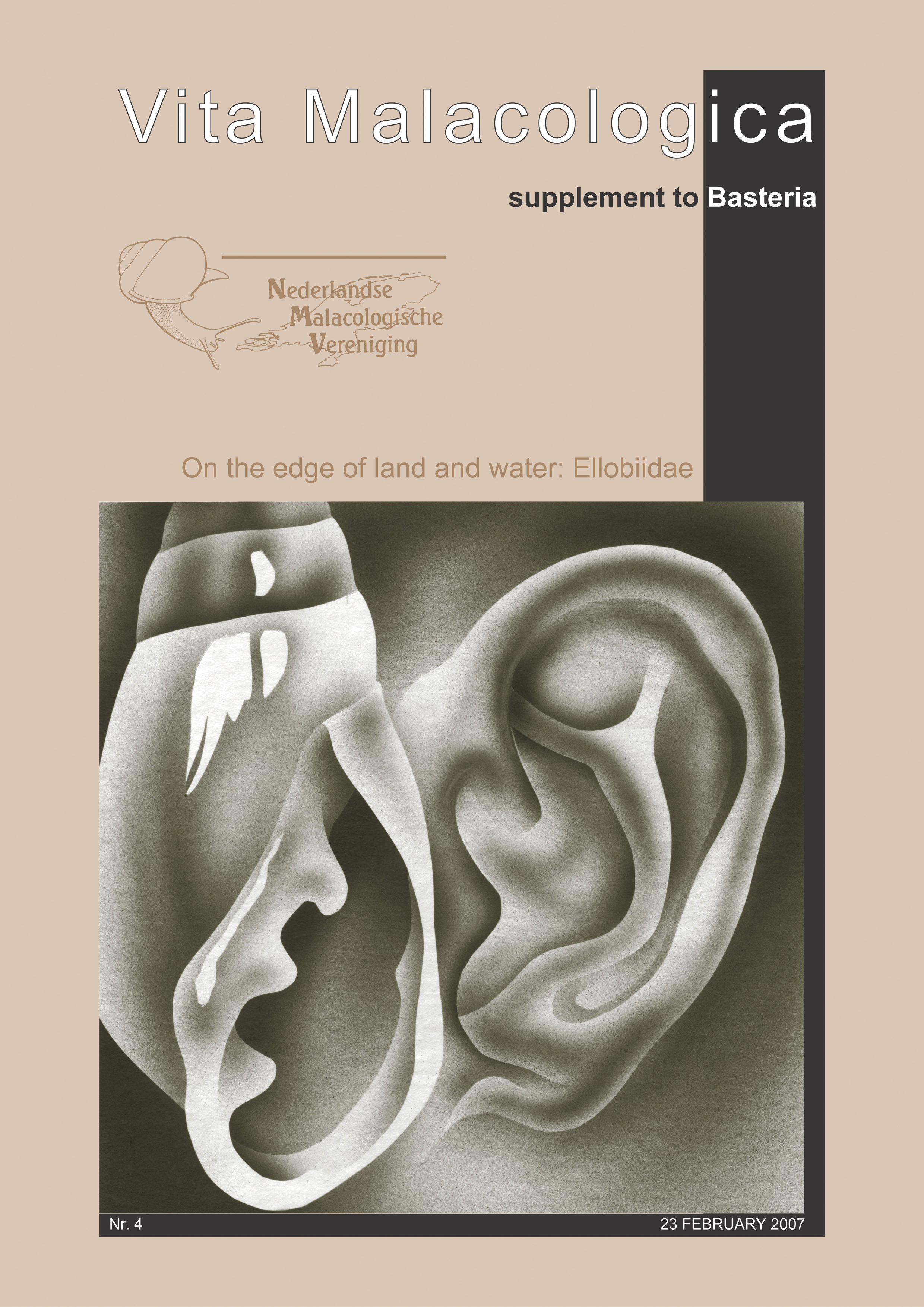A.M. DE FRIAS MARTINS. Morphological and anatomical diversity within the Ellobiidae (Gastropoda, Pulmonata, Archaeopulmonata).
Abstract
A pictorial representation of the diversity of the Ellobiidae through the inspection of 66 species belonging in 24 genera is presented. Morphological and anatomical characters were investigated for cladistics analysis, of which a cladogram resulted and from which a classification was derived. The five current subfamilies were differently supported by the analysis and can be briefly characterized as follows:
1) Pythiinae: monaulic, pallial ducts entirely glandular, wide visceral nerve ring, long right parietovisceral connective
2) Ellobiinae: diaulic, pallial ducts entirely glandular, wide visceral nerve ring, short parietovisceral connective
3) Carychiinae: manaulic, pallial ducts entirely glandular with prostate distal, wide visceral nerve ring, short parietovisceral connective
4) Pedipedinae: monaulic/incipient semidiaulic, pallial ducts glandular in proximal half, short visceral nerve ring
5) Melampodinae: advanced semidiaulic, pallial ducts not glandular, short visceral nerve ring.
Pseudomelampus, Microtralia and Sarnia were transferred from the Pedipedinae to the Melampodinae.
J.G.M. RAVEN & J.J. VERMEULEN. Notes on molluscs from NW Borneo and Singapore. 2. A synopsis of the Ellobiidae (Gastropoda, Pulmonata).
Abstract
An overview is given of the species of Ellobiidae hitherto known to occur in NW Borneo (Malaysia and Brunei) and Singapore, and information is provided regarding their habitats. The species are restricted to coastal environments that are frequently or occasionally flooded with water of variable salt content (euryhaline; including estuaries and salt marshes), and the coastal strip that receives a spray of salt water (between the high tide line and up to several tens to hundreds of metres inland). The number of species found in NW Borneo and Singapore is high, despite the maximum number of species at any locality being 16. As large areas have not yet been investigated (including the large estuary of the Rajang river and much of Sabah, both on Borneo), and many other species are widely distributed in the Central West Pacific, it is expected that additional species will be found in the area under discussion. The only fossils encountered thus far are Ellobium aurisjudae, E. scheepmakeri and Pythia pantherina from the Holocene of Sarawak, Malaysia.


